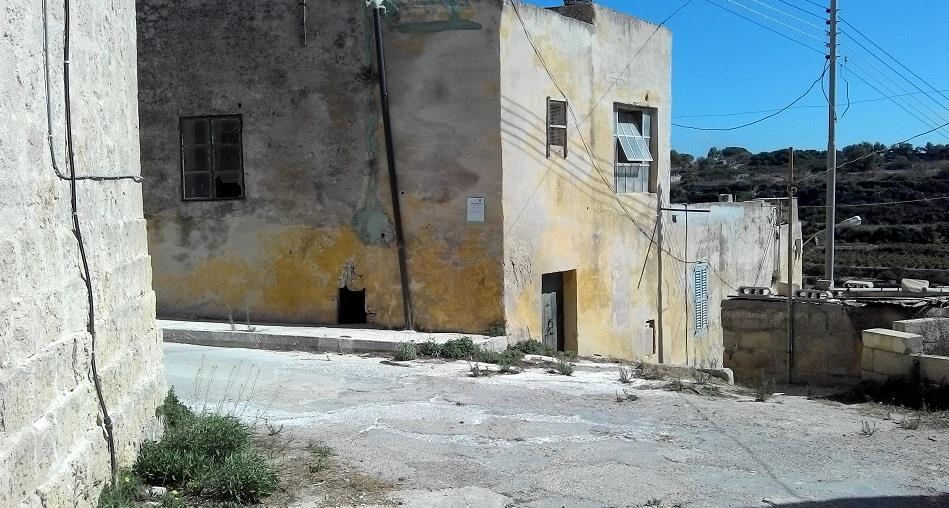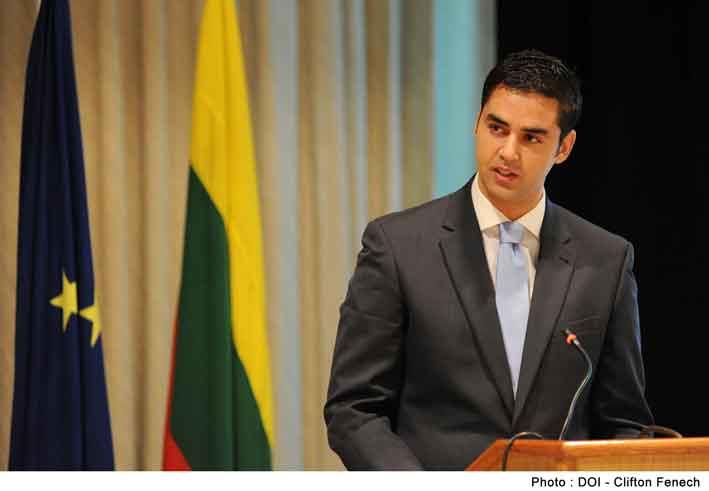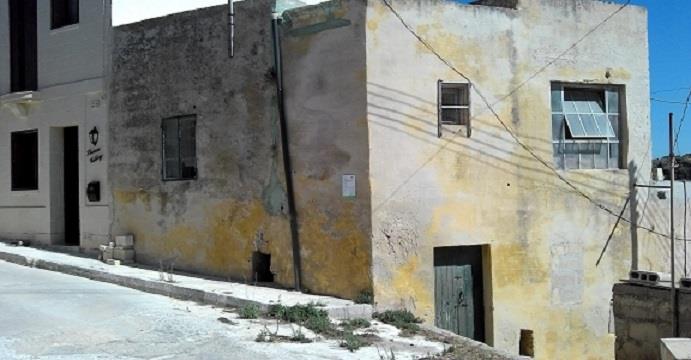Arguments used to refuse permission for a proposed development in a rural area of Rabat were not invoked when the same property, and an adjacent farmhouse, were purchased by Parliamentary Secretary Ian Borg for redevelopment into two sizeable apartments.
At least one argument used to justify the refusal of the first proposal – the take-up of fresh land – should also have applied in Dr Borg’s case, since his property’s footprint is being extended by over 50 square metres.
The controversial development is taking place in the hamlet of Santa Katerina, which is centred around a 16th-century chapel dedicated to St Catherine of Alexandria on the boundary between Rabat and Dingli. Dr Borg’s property is on the edge of a ridge and enjoys stunning views of the underlying Dingli countryside.
A number of investigative articles which appeared on Il-Mument earlier this year failed to produce a reaction from Dr Borg – even though the newspaper specifically questioned his silence at one point. But the series of articles did lead Rabat farmer and qualified accountant Noel Ciantar to launch his own investigation, going through numerous publicly-available documents before concluding that the decision to issue a permit to Dr Borg was the result of the “abuse of entrusted power for private gain”. He has asked the Permanent Commission Against Corruption, the Commissioner of Police, the Commissioner for Environment and Planning in the Office of the Parliamentary Ombudsman and the Speaker of the House of the Representatives to look into the case.

Four properties consolidated to pave way for development
Lands and Public Registry records show that Dr Borg acquired the development site and adjacent property through four separate contracts signed in 2014, paying the previous owners €223,115 in total.
The first acquisition took place on 13 January, when 614 square metres of agricultural land owned by pensioner Antonio Scicluna were acquired for €10,000. On 16 May, ‘Scicluna Farmhouse’, half of which was half owned by Mr Scicluna, his 14 surviving siblings and the two children of a deceased sister, and the other half by their elderly mother, was sold on 16 May for €128,115.
Two other transactions were also carried out on 16 May. A farmhouse adjacent to the Sciclunas’ farmhouse, named ‘The View’, was sold by Denise Grech for €80,000, while a 34 square metre sliver of undeveloped land adjacent to it was sold by Kenneth Bugeja for €15,000.
A development application to “demolish existing substandard structures with no rural value and construct two residential dwellings” was filed on 12 June 2014. A permit was issued less than six months later, on 3 December.
Dr Borg’s declarations of assets as a parliamentary secretary suggest that he took a sizeable loan to acquire the four adjacent properties. While he declared that he had €23,000 in outstanding loans at the end of 2013, the figure went up to €223,439.58 at the end of last year.
The declarations of assets provide no indication of how the development costs are being funded, though since construction works actually began this year, Dr Borg’s next declaration may provide a clue.

Previous proposed development refused
As it happens, the same Kenneth Bugeja who sold a plot of land to Dr Borg had actually filed a development application to redevelop ‘The View’ on 2 April 2012, but the application was turned down in December. An appeal was filed, but it was withdrawn shortly before Dr Borg acquired the farmhouse.
According to the Northwest Local Plan, which includes Rabat, Santa Katerina is classified as a Category 3 small rural settlement. Only the rehabilitation or redevelopment of existing buildings should be permitted, and the take-up of fresh land – “notwithstanding the location of the site in relation to existing buildings” – should not be permitted, in contrast to hamlets classified as ‘large rural settlements’, where uncommitted land may be taken up as long as the total footprint does not exceed 150 square metres.
In any case, only existing structures with a footprint of at least 50 square metres can be redeveloped into new dwellings, and this was one of the reasons why the application to redevelop ‘The View’ – the footprint of which only totalled 35 square metres – was rejected.
But another reason for refusal was that the proposed redevelopment would have created a building with a total footprint of 70 square metres.
In her recommendations, the case officer said that a permit should not be granted because the proposed redevelopment “would entail the take-up of fresh land within a Category 3 settlement”, among other reasons.

Take-up of uncommitted land ignored in parliamentary secretary’s case
However, the development proposed by Dr Borg also entails the take-up of fresh land which was deemed objectionable in the previous proposal.
The two farmhouses he bought had a total footprint of 95 square metres, but the proposed building has a footprint of 150 square metres – the maximum possible for rural settlements – at ground floor level.
However, the prohibition on the take-up of fresh land in small rural settlements was not taken into account this time around, with the case officer – coincidentally, the same one assigned to the previous application – simply noting that a 150 square metre footprint complies with the policy.
The policy governing small rural settlements was specifically designed to restrict the increase in activity or density in such settlements, which “are characterised by low densities and can only be considered as small clusters of buildings” according to the local plan.
But in effect, granting a permit does contribute to increasing the density of the settlement, allowing for the construction of two dwellings instead of two smaller structures, of which only one was large enough to justify redevelopment into a dwelling.
In fact, the natural panel of the Heritage Advisory Committee (NHAC) had pressed for the refusal of the development, noting that Santa Katerina “is gradually being redeveloped into a modern ‘apartment style’ settlement, changing completely the rural character of the area and the surrounding landscape.”
“With regard to the current application, notwithstanding the attempt made by the architect to try to retain the rural appearance through the proposed treatment of the elevations, the panel considers that the proposed development is excessive both in density and especially in mass. This would have a negative impact on the rural character of the area,” the NHAC said before recommending refusal.
That said, as the NHAC suggests, other similar developments have been approved in the area, including in the property just next to Dr Borg’s own.

Malta’s largest ‘small guest flatlet’?
In his latest declaration of assets, Dr Borg states that he owned “two substandard residences to be converted into a residential unit for Dr Borg, including a small guest flatlit (sic).” But a residence with a small guest flatlet is a misleading description, if the case officer’s report is anything to go by. It appears that the plan is to construct two dwellings with a floor space of approximately 200 square metres each – again, the maximum permissible in rural settlements. The proposed basement’s own floor space was not taken into account since it lies underground.
Such a floor space is more than enough for a 3-4 bedroom apartment, which would likely command a high price on the property market.
Il-Mument had reported that the two proposed apartments would have a conservative estimated market value of around €1 million, based on a value of €2,045 per square metre. This value is roughly three-quarters of the value of investment apartments in Sliema, St Julian’s and Swieqi area as cited by globalpropertyguide.com, which appears to be more than reasonable for apartments in a quiet area enjoying stunning – and theoretically unobstructable, given their location at the edge of a ridge overlooking rural land – views.
Allowing Dr Borg to develop two dwellings instead of one, therefore, is likely to have made him hundreds of thousands of euros richer in the long run.
As it happens, earlier this week The Malta Independent asked a Mepa spokesman to explain why permission had been granted to develop the site over and above the original footprint, but no clear explanation was provided, although the spokesman pointed out that the proposed development mitigates the exposed blank wall of an adjacent building.
Company director files application in Dr Borg’s name
Another issue that has been raised is that the application was not filed by Dr Borg himself, but by a certain Renald Azzopardi, who resides in Żejtun. Mr Azzopardi is listed as the site manager and 24-hour contact in the billboard displayed on site in line with Environmental Management Construction Site Regulations, while Dr Borg is listed as the owner.
The Malta Independent’s own investigations show that Mr Azzopardi is the sole owner – bar one nominal share – director, legal representative and company secretary of two companies: SeaNav Maritime Services Ltd and Azzo Trading and Supplies Malta Ltd. He is also owns 50 per cent of Farogroup Ltd and is one of its two directors: the other director owns the remaining 50 per cent. Farogroup is described as being involved in turnkey solutions, building services and fire, safety and security in the LinkedIn profile of its managing director. But while this description suggests it may be involved in the construction of Dr Borg’s property, the billboard displayed on site suggests otherwise, making Mr Azzopardi’s role unclear. Redmap Ltd is listed as the lead contractor and Carmel Vella Ltd is listed as the only other contractor involved.
In a reply to an article that appeared in last Wednesday’s edition of The Malta Independent, Dr Borg denied any abuse of power, making the point that he has the same right to take out loans, purchase, apply for development permits and build a private residence as anyone else. That may be so, but since he stands to benefit considerably from the granting of a permit in apparent breach of planning policy, a proper investigation is more than warranted in this case.
In fact, even Dr Borg does not appear to contest this, saying that he would leave the matter in the hands of those who “”have the power to investigate with absolute freedom”.
Ian Borg reacts
Dr Borg, sais it was completely incorrect to say that a similar application for the entire site had been refused: the previous application only covered one of the two former farmhouses Dr Borg had acquired.
Dr Borg noted that the person who asked the Permanent Commission Against Corruption to investigate had no connection to his property, although he stressed that he still had every right to request such an investigation.
However, he also said that the same person had tried to block the public from accessing the medieval complex of is-Simblija between Rabat and Dingli, pointing out that at the time, he had worked with other NGOs to ensure that the site could be accessed.